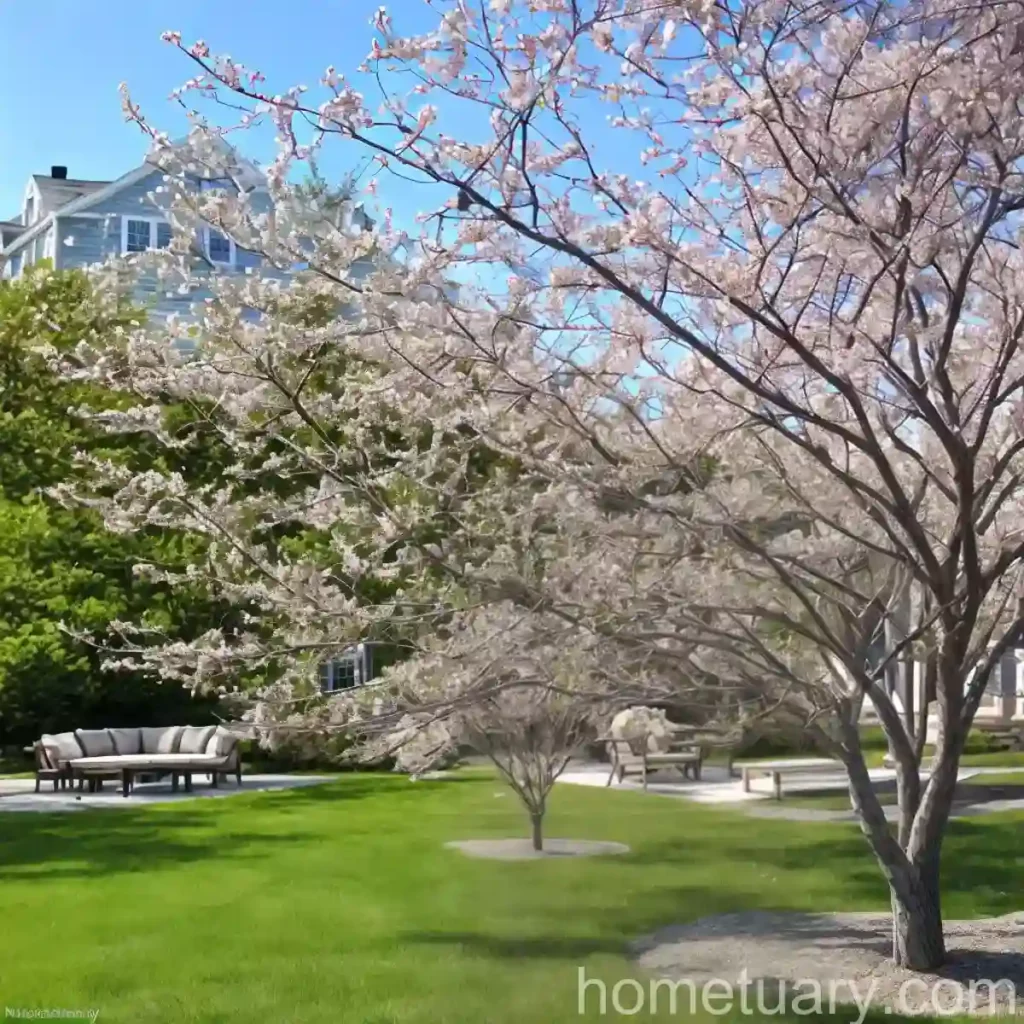Nantucket Serviceberry (Amelanchier nantucketensis): A Comprehensive Guide
Introduction to Nantucket Serviceberry
The Nantucket serviceberry, scientifically known as Amelanchier nantucketensis, is a versatile and visually appealing plant that belongs to the Rosaceae family. This stunning, multi-seasonal shrub presents a diverse range of characteristics, from delicate springtime blossoms to edible summer berries and vibrant fall foliage. Its adaptability, hardiness, and ornamental appeal make it a popular choice in landscape designs, gardens, and natural habitats. In this comprehensive guide, we will delve into the various aspects of the Nantucket serviceberry, including its cultural requirements, uses, propagation methods, common diseases, and more.
Key Takeaways – Nantucket Serviceberry (Amelanchier nantucketensis)
Before we delve into the specifics of this delightful shrub, let’s take a quick look at some key takeaways related to the Nantucket serviceberry:
- Botanical Name: Amelanchier nantucketensis
- Common Name: Nantucket serviceberry
- Family: Rosaceae
- Growth Habit: Deciduous shrub or small tree
- Native Habitat: Eastern United States
- Notable Features: Spring blossoms, edible berries, vibrant fall foliage
- Landscape Uses: Ornamental shrub, naturalized landscapes, habitat restoration
Now that we have a general understanding of the plant, let’s explore its specific cultural requirements and various aspects in detail.
Planting and Growing Nantucket Serviceberry
Growing Nantucket serviceberry successfully involves adhering to specific cultural practices and understanding its environmental preferences. By providing the ideal conditions, you can ensure that your Nantucket serviceberry thrives and adds a touch of natural charm to its surroundings.
Water
Nantucket serviceberry prefers consistent moisture, especially during its early establishment period. Proper watering is crucial for encouraging robust growth and preventing stress-related issues. However, as with most plants, it is essential to avoid waterlogging, which can lead to root rot and other damaging conditions.
Sunlight
This versatile shrub flourishes in full sun to partial shade conditions. In regions with hot summers, providing some afternoon shade can help protect the plant from excessive heat stress. Adequate sunlight is essential for promoting healthy flowering, fruiting, and overall growth.
Soil
Nantucket serviceberry thrives in well-draining, slightly acidic to neutral soil. It is adaptable to a range of soil types, including loamy and sandy soils. However, it is crucial to avoid excessively dry or waterlogged conditions, regardless of the soil type.
Fertilizer
When it comes to fertilizing Amelanchier nantucketensis, a balanced, slow-release fertilizer can be beneficial during the initial planting phase. However, once established, the plant generally thrives without an excess of fertilization.
Pruning
Pruning Nantucket serviceberry is relatively minimal, primarily focusing on the removal of any dead, damaged, or crossing branches. While the plant has an attractive natural form, routine maintenance pruning can help shape the shrub and encourage better air circulation within the canopy.
Propagation
The Nantucket serviceberry can be propagated through various methods, including seeds, cuttings, and division. Each technique has its own requirements and success rates, offering flexibility for propagating new plants.
Container Popularity
Given its compact size and ornamental appeal, Amelanchier nantucketensis is well-suited for container cultivation. This makes it an excellent choice for urban gardens, patios, and small outdoor spaces.
Common Uses of Nantucket Serviceberry
Landscape Design
Nantucket serviceberry serves as an excellent addition to a wide range of landscape designs, providing year-round appeal and eco-friendly benefits. Its spring blossoms, edible berries, and captivating fall colors make it an ideal choice for naturalized landscapes, residential gardens, and urban green spaces.
Wildlife Habitat
The plant’s berries are not only a treat for humans but also serve as an essential food source for various wildlife species, including birds and small mammals. By including Nantucket serviceberry in your landscape, you can contribute to supporting local biodiversity and creating a thriving wildlife habitat.
Edible Berries
The berries of Amelanchier nantucketensis are not only visually appealing but also delicious and nutritious. They can be used in a variety of culinary applications, including jams, jellies, pies, and beverages, adding a flavorful touch to your culinary creations.
Medicinal Uses
In addition to its culinary appeal, the berries are also known for their potential health benefits. Rich in antioxidants and essential nutrients, they have been utilized in traditional medicine for their medicinal properties.
Common Diseases and Pests of Nantucket Serviceberry
Disease Diagnosis
Nantucket serviceberry is generally resilient to most diseases but can occasionally fall victim to certain fungal infections, such as powdery mildew or rust. Regular monitoring and prompt treatment can help mitigate the impact of these diseases.
Common Pests
While generally low-maintenance, Nantucket serviceberry may attract certain pests such as aphids, spider mites, and caterpillars. Early detection and appropriate pest management strategies can help maintain the plant’s health and vitality.
Botanist’s Tips for Nantucket Serviceberry Care
- Mulching: Applying a layer of mulch around the base of the plant can help conserve soil moisture and suppress weed growth.
- Seasonal Maintenance: Regularly inspect and care for your Nantucket serviceberry throughout the growing season, addressing any issues promptly and ensuring adequate nutrition and hydration.
- Wildlife Conservation: Embrace the plant’s role in supporting local wildlife and emphasize the importance of maintaining a balanced ecosystem.
Fun Facts about Nantucket Serviceberry
- The vibrant fall foliage of Amelanchier nantucketensis adds a stunning array of colors to the landscape, ranging from rich reds to glowing oranges and yellows.
- The berries of Nantucket serviceberry are a sought-after treat for birds, contributing to the ecological value of the plant.
Conclusion
Nantucket serviceberry (Amelanchier nantucketensis) stands out as an attractive and versatile plant with a range of uses and eco-friendly benefits. Whether you are seeking a visually striking addition to your garden, an edible landscape plant, or a contributor to local wildlife conservation, this remarkable shrub offers a myriad of possibilities. By understanding its cultural requirements, landscape uses, and potential challenges, you can cultivate and appreciate the beauty of Nantucket serviceberry in various settings.















